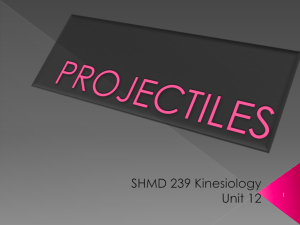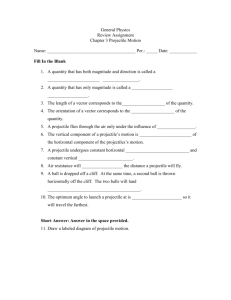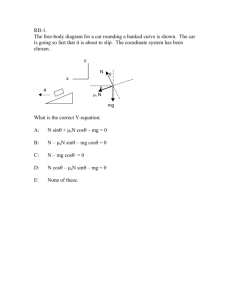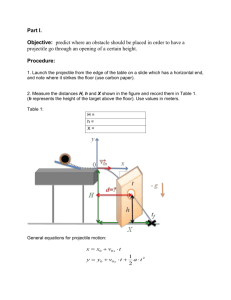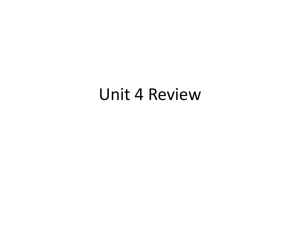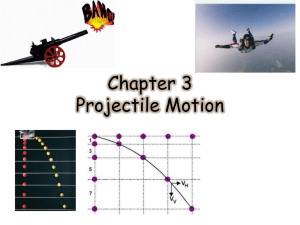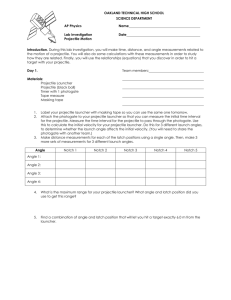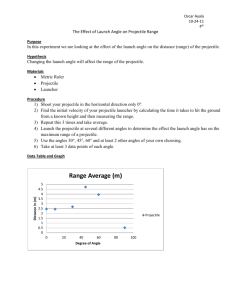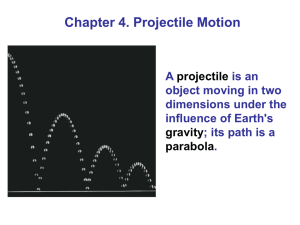AP Calculus BC – 3.6 Chain Rule 1
advertisement
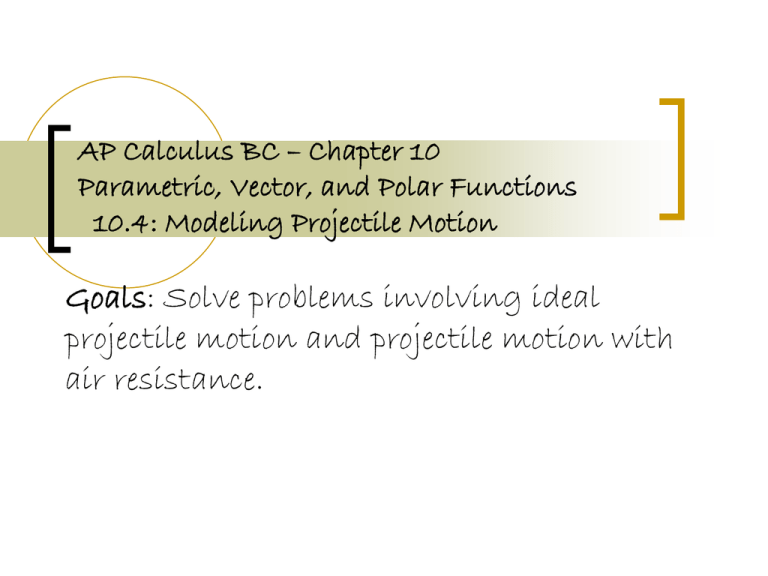
AP Calculus BC – Chapter 10 Parametric, Vector, and Polar Functions 10.4: Modeling Projectile Motion Goals: Solve problems involving ideal projectile motion and projectile motion with air resistance. Ideal Projectile Motion: Assume that a projectile is launched from the origin at time t=0 into the first quadrant with an initial velocity v0. If v0 makes an angle with the horizontal and it we write v0 for the initial speed |v0|, then r=(v0cos )ti + ((v0sin )t - ½ gt2)j is the vector equation for ideal projectile motion. Ideal Projectile Motion: The angle is the projectile’s launch angle (firing angle, angle of elevation) and v0 is the projectile’s initial speed. The projectile’s range is the distance from the origin to the point of impact on horizontal ground. Height, Flight Time and Range: For ideal projectile motion when an object is launched from the origin over a horizontal surface with initial speed v0 and launch angle : 2 v0 sin Maximum height: ymax 2 g 2v0 sin t g Flight time: 2 Range: v R 0 sin 2 g Projectile Motion with Linear Drag: The motion of a projectile with linear drag force launched from the origin over a horizontal surface at t=0 is given by v0 g v0 kt kt r 1 e cos i 1 e sin 2 1 kt e kt k k k j where the drag coefficient k is a positive constant representing resistance due to air density, v0 and are the projectile’s initial speed and launch angle, and g is the acceleration of gravity. Assignment and Notes: HW 10.4: #1, 5, 6, 13 or 17, 16, 18, 23, 24, 25. Test Friday, March 16. Sign up and pay for your AP Calculus BC exam by next Monday.


